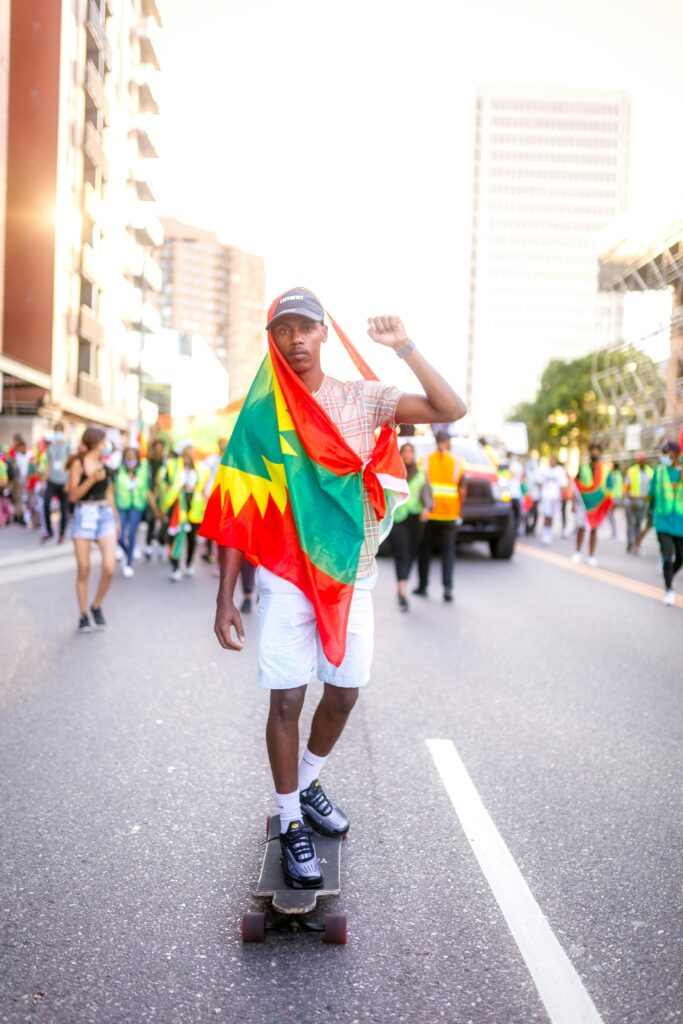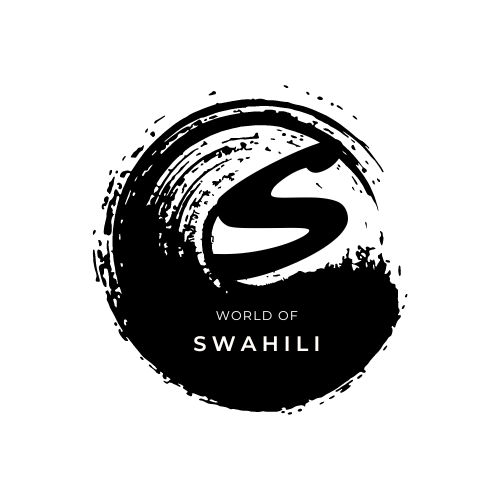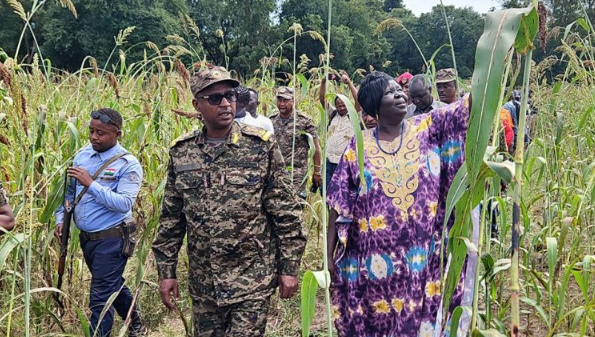Introduction: Understanding Waraana abo yeroo ammaa
Table of Contents
The Waraana abo yeroo ammaa, or Oromo Liberation Army (OLA), is a military organization that emerged from the broader Oromo nationalist movement in Ethiopia. Founded in the late 1970s as the armed wing of the Oromo Liberation Front (OLF), the Waraana abo yeroo ammaa seeks to address the historical grievances of the Oromo people, who constitute Ethiopia’s largest ethnic group. The organization has aimed to secure greater autonomy and rights for the Oromo, advocating for self-determination and an end to what many perceive as systemic marginalization by the Ethiopian government. The Waraana abo yeroo ammaa activities have been closely intertwined with Ethiopia’s complex socio-political landscape, including the long-standing ethnic tensions and conflicts that have shaped the country’s history.
The purpose of this article is to explore the current situation of the Waraana abo yeroo ammaa and its impact on the Oromo people and the broader Ethiopian context. As recent developments unfold, including shifting political dynamics, changes in government policies, and ongoing conflicts, it is crucial to analyze how these factors influence the activities of the Waraana abo yeroo ammaa and the aspirations of the Oromo population. Understanding the OLA’s role is essential for grasping the challenges and opportunities facing the Oromo people today.
Discussing the Waraana abo yeroo ammaa is particularly significant in light of Ethiopia’s evolving political landscape. The interplay between the Waraana abo yeroo ammaa , regional stability, and the rights of various ethnic groups is pivotal in shaping Ethiopia’s future. By examining the current state of the Waraana abo yeroo ammaa and its implications for the Oromo people and the nation, we aim to contribute to a deeper understanding of the ongoing struggles and aspirations that define this critical period in Ethiopian history.
Historical Background of the Waraana abo yeroo ammaa
The Waraana abo yeroo ammaa (OLA), originally the armed wing of the Oromo Liberation Front (OLF), was established in the late 1970s as a response to the longstanding political, social, and economic marginalization faced by the Oromo people in Ethiopia. The formation of the Waraana abo yeroo ammaa can be traced back to the broader Oromo nationalist movement, which sought to address grievances stemming from centuries of domination and suppression by successive Ethiopian regimes.
Founding and Early Years
The Waraana abo yeroo ammaa was officially founded in 1973, but its roots can be traced to earlier Oromo nationalist movements and organizations formed during the Italian occupation and subsequent periods of Ethiopian rule. The OLF was formed in 1973 to advocate for the rights of the Oromo people, and the OLA was created as its military wing to conduct armed struggle against the Ethiopian state. The initial goal of the Waraana abo yeroo ammaa was to fight for the self-determination of the Oromo people and to resist oppressive government policies, particularly under the Derg regime, which came to power in 1974.
During its early years, the Waraana abo yeroo ammaa operated primarily from rural bases and gained support among Oromo youth disillusioned with the political repression they faced. The organization focused on guerrilla warfare, targeting government installations and military personnel while seeking to mobilize the Oromo population for its cause.
Key Events Shaping the Waraana abo yeroo ammaa Mission
Several key events have shaped the mission and objectives of the Waraana abo yeroo ammaa over the years:
- Derg Regime (1974-1991): The Derg, a Marxist-Leninist military junta, implemented policies that marginalized ethnic identities, including the Oromo. This period saw significant armed resistance, with the OLA gaining prominence as it capitalized on widespread discontent among the Oromo people.
- Ethiopian Civil War (1974-1991): The Waraana abo yeroo ammaa played a critical role in the broader civil conflict that engulfed Ethiopia, aligning with other ethnic and opposition groups against the Derg. This alliance helped to raise awareness of Oromo issues and further entrenched the OLA in the national struggle for liberation.
- Fall of the Derg and Rise of Ethnic Federalism (1991): The collapse of the Derg regime in 1991 led to the establishment of the Ethiopian People’s Revolutionary Democratic Front (EPRDF), which adopted a policy of ethnic federalism. While this policy initially appeared to provide opportunities for Oromo self-governance, the Waraana abo yeroo ammaa remained skeptical of the EPRDF’s commitment to genuine representation and continued its armed struggle.
- Post-2018 Reforms: The political landscape shifted dramatically with the rise of Prime Minister Abiy Ahmed in 2018, who initially promised democratic reforms and greater autonomy for ethnic groups. However, these reforms led to renewed ethnic tensions and violence, prompting the Waraana abo yeroo ammaa to reassert itself as a significant force in Oromo activism.
Political and Social Factors Leading to Emergence
The emergence of the Waraana abo yeroo ammaa as a prominent force in Oromo activism can be attributed to several political and social factors:
- Historical Marginalization: The Oromo people have faced systemic discrimination and exclusion from political power, cultural expression, and economic opportunities. The desire for self-determination and recognition of Oromo identity has fueled support for the Waraana abo yeroo ammaa .
- Ethnic Politics: Ethiopia’s political landscape has become increasingly ethnicized, with different groups vying for power and representation. The Waraana abo yeroo ammaa capitalized on this trend, positioning itself as a defender of Oromo rights in a context where ethnic identity plays a crucial role in political mobilization.
- Youth Mobilization: A significant segment of the Oromo population, particularly the youth, has rallied around the Waraana abo yeroo ammaa, inspired by its commitment to fighting for their rights. The rise of social media and grassroots movements has further amplified their voices, allowing the OLA to connect with a broader audience.
- Response to Government Policies: The OLA’s activities have been shaped by the Ethiopian government’s policies, which have often been perceived as repressive. The organization’s response to government crackdowns and human rights abuses has solidified its role as a champion for the Oromo people.
Current Situation of the Waraana abo yeroo ammaa

The Waraana abo yeroo ammaa (OLA) remains a significant player in the socio-political landscape of Ethiopia, particularly within the Oromia region. In recent years, the OLA has been involved in various military activities, territorial engagements, and complex interactions with government forces and other political entities. Below is an analysis of the current status of the OLA, focusing on its military operations, territorial influence, relationships with governmental forces, and recent developments.
Recent Military Activities and Operations
The OLA has escalated its military activities in response to ongoing tensions between the Oromo people and the Ethiopian government. Key features of its recent operations include:
- Guerrilla Warfare Tactics: The Waraana abo yeroo ammaahas employed guerrilla warfare strategies, conducting ambushes and targeted attacks against government military installations and personnel. These tactics aim to disrupt state operations and assert the group’s presence in contested areas.
- Increased Attacks: Reports indicate a surge in attacks on government forces in various parts of Oromia. For instance, the Waraana abo yeroo ammaa has claimed responsibility for several high-profile attacks, leading to casualties among military personnel and local officials. Such operations have sought to undermine government authority and signal the group’s military capability.
- Civilian Impact: The military activities of the Waraana abo yeroo ammaa have also had implications for civilian populations, leading to displacements and heightened security concerns. Many Oromo civilians find themselves caught in the crossfire between Waraana abo yeroo ammaa fighters and government troops, complicating the humanitarian situation in the region.
Territorial Control and Influence
The territorial influence of the Waraana abo yeroo ammaa has fluctuated due to ongoing military engagements and government counter-offensives. Key points regarding its territorial situation include:
- Strongholds in Rural Areas: The Waraana abo yeroo ammaa has established strongholds in certain rural areas of Oromia, where it enjoys considerable support from local populations. This base of support enables the OLA to operate with a degree of autonomy, challenging government control in these regions.
- Shifts in Control: While the Waraana abo yeroo ammaa has made territorial gains in specific localities, government forces have also mounted significant military campaigns to reclaim territory and suppress OLA activities. This back-and-forth dynamic reflects the ongoing struggle for control and influence within Oromia.
- Community Support: The OLA’s influence is partly sustained by community support, with many Oromo individuals viewing the group as a defender of their rights against perceived government oppression. This local backing is crucial for the OLA’s operational capacity and recruitment efforts.
Interactions with Government Forces and Other Political Entities
The relationship between the Waraana abo yeroo ammaa and government forces, as well as other political entities, remains fraught with tension and conflict:
- Military Confrontations: The Ethiopian government has consistently labeled the OLA as a terrorist organization, which has led to military confrontations. Government forces have launched offensives to dismantle OLA operations, often responding with heavy-handed tactics that exacerbate tensions.
- Negotiation Challenges: Despite calls for dialogue and peace negotiations, efforts to establish a peaceful resolution have faced significant obstacles. The government’s refusal to recognize the Waraana abo yeroo ammaa as a legitimate political actor complicates potential negotiations and peace-building efforts.
- Political Alliances: The Waraana abo yeroo ammaa has sought to align with other opposition groups, fostering a sense of unity among various ethnic and political entities opposed to the current government. However, these alliances are often tenuous, given the diverse interests and agendas of different factions.
Recent Developments
Recent developments concerning the Waraana abo yeroo ammaa indicate a complex interplay of conflict and efforts for peace:
- Escalation of Conflict: The Waraana abo yeroo ammaa military activities have intensified in response to government crackdowns, resulting in escalated violence in certain regions. Reports of increased confrontations between Waraana abo yeroo ammaa fighters and government troops have raised concerns about the humanitarian impact and stability in Oromia.
- Calls for Peace Negotiations: Various stakeholders, including local community leaders and international organizations, have urged both the Waraana abo yeroo ammaa and the Ethiopian government to engage in peace negotiations. There have been sporadic discussions about possible dialogue, but substantive progress remains elusive.
- Humanitarian Concerns: The ongoing conflict has led to significant humanitarian challenges, with many civilians displaced from their homes and lacking access to basic services. International organizations have called for greater attention to the humanitarian crisis resulting from the conflict and for measures to protect civilians.
Challenges Facing the Waraana abo yeroo ammaa

The Waraana abo yeroo ammaa (OLA) faces several significant challenges that hinder its objectives and impact its operations. These challenges stem from internal divisions, military confrontations, logistical difficulties, and international perceptions. Understanding these obstacles is essential for comprehending the current dynamics of the Waraana abo yeroo ammaa and its struggle for the rights of the Oromo people.
1. Internal Divisions and Leadership Struggles
Internal cohesion is crucial for any military organization, and the Waraana abo yeroo ammaa has faced challenges related to internal divisions:
- Leadership Conflicts: Disagreements among leadership regarding strategy, operational focus, and political alignment can create rifts within the organization. Factionalism has the potential to weaken the OLA’s effectiveness and distract from its core mission.
- Ideological Differences: The Waraana abo yeroo ammaa comprises various factions with differing views on the path to achieving Oromo self-determination. These ideological differences can lead to friction and complicate efforts to present a united front against external adversaries.
- Recruitment and Morale: Internal divisions can also affect recruitment and morale among fighters. When leadership struggles are evident, potential recruits may hesitate to join, fearing instability or a lack of clear direction. This can diminish the OLA’s operational capacity over time.
2. Military and Logistical Challenges
The Waraana abo yeroo ammaa faces significant military and logistical challenges as it engages in ongoing conflict with Ethiopian government forces:
- Asymmetrical Warfare: The Ethiopian government possesses a larger and better-equipped military force, which puts the Waraana abo yeroo ammaa at a disadvantage. The OLA relies on guerrilla tactics to counteract this imbalance, but these strategies can be risky and resource-intensive.
- Logistical Limitations: The Waraana abo yeroo ammaa ability to sustain military operations is hampered by logistical constraints, including access to weapons, supplies, and adequate funding. Limited resources can hinder its operational effectiveness and restrict its ability to mount sustained campaigns.
- Counterinsurgency Operations: The Ethiopian government has been proactive in conducting counterinsurgency operations, which have targeted Waraana abo yeroo ammaa strongholds and sought to dismantle its organizational structure. These operations pose a significant threat to the OLA’s presence and influence in Oromia.
3. International Perceptions and Potential Support or Opposition
International perceptions of the Waraana abo yeroo ammaa play a crucial role in shaping its capabilities and options for engagement:
- Labeling as a Terrorist Organization: The Ethiopian government has labeled the Waraana abo yeroo ammaa a terrorist organization, which complicates its ability to gain international legitimacy and support. This designation affects how foreign governments and organizations view the Waraana abo yeroo ammaa, often limiting diplomatic channels and potential aid.
- Lack of International Support: Compared to other ethnic or political movements in Ethiopia, the Waraana abo yeroo ammaa has struggled to garner significant international backing. The absence of support from key global players can hinder its operational capabilities and political leverage.
- Human Rights Concerns: The Waraana abo yeroo ammaa military activities and their impact on civilian populations can lead to negative perceptions internationally. Human rights organizations often highlight abuses by both government forces and insurgent groups, complicating the OLA’s narrative and making it difficult to gain sympathy for its cause.
Impact of Challenges on Waraana abo yeroo ammaa Objectives and Operations
These challenges collectively impact the Waraana abo yeroo ammaa ability to achieve its objectives:
- Operational Effectiveness: Internal divisions and military constraints directly affect the OLA’s capacity to conduct successful operations. Without a cohesive strategy and sufficient resources, the OLA may find it difficult to launch effective campaigns against government forces.
- Political Legitimacy: The perception of the Waraana abo yeroo ammaa as a terrorist organization limits its potential to engage in meaningful dialogue with other political entities and reduce tensions within the region. This lack of political legitimacy stifles opportunities for negotiations that could lead to peace.
- Community Support: If the OLA is seen as internally divided or ineffective, it risks losing support from the Oromo community, which is essential for its continued viability. Community backing is vital for recruitment and for maintaining morale among fighters.
Conclusion: The Future of Waraana abo yeroo ammaa and Oromo Politics

The Waraana abo yeroo ammaa (OLA), or Waraana ABO, remains a pivotal force in the ongoing struggle for Oromo rights and identity in Ethiopia. This article has explored the current situation of the Waraana abo yeroo ammaa, highlighting its military activities, territorial influence, and complex interactions with the Ethiopian government. It has also examined the internal challenges the OLA faces, including leadership struggles, logistical constraints, and varying perceptions among different segments of the Oromo population.
The Waraana abo yeroo ammaa influence on Oromo identity cannot be understated; it serves as a symbol of resistance and a vehicle for cultural revival, especially among the youth. The organization has also catalyzed grassroots movements, fostering solidarity and creating a political space for discourse surrounding the rights of the Oromo people. However, the challenges it faces—ranging from internal divisions to international perceptions—pose significant hurdles to its effectiveness and legitimacy.
Looking ahead, the potential future of the OLA will be shaped by several factors:
- Evolving Political Landscape: As Ethiopia grapples with its complex ethnic and political dynamics, the Waraana abo yeroo ammaa role may shift based on the government’s response to Oromo aspirations. Any moves toward inclusive governance or peace negotiations could redefine the Waraana abo yeroo ammaa position in the political landscape.
- Continued Activism: The resilience of grassroots movements will be essential for maintaining momentum in the fight for Oromo rights. The OLA ability to align itself with these movements, without losing its foundational principles, will determine its future relevance.
- Dialogue and Peacebuilding: For the Waraana abo yeroo ammaa to achieve its long-term objectives, engaging in dialogue with the Ethiopian government and other political entities will be crucial. Finding common ground can pave the way for a peaceful resolution to the conflicts that have historically divided the Oromo and the state.
In conclusion, the future of the Oromo Liberation Army and Oromo politics is intertwined with the broader struggle for justice, equality, and representation within Ethiopia. As the situation evolves, it is vital for readers to stay informed and engaged with the issues facing the Oromo community. By understanding the challenges and aspirations of the Waraana abo yeroo ammaa and the Oromo people, we can foster a more inclusive and equitable discourse that supports their quest for self-determination and dignity. Your engagement can contribute to raising awareness and supporting positive change for the Oromo people and the broader Ethiopian society.




